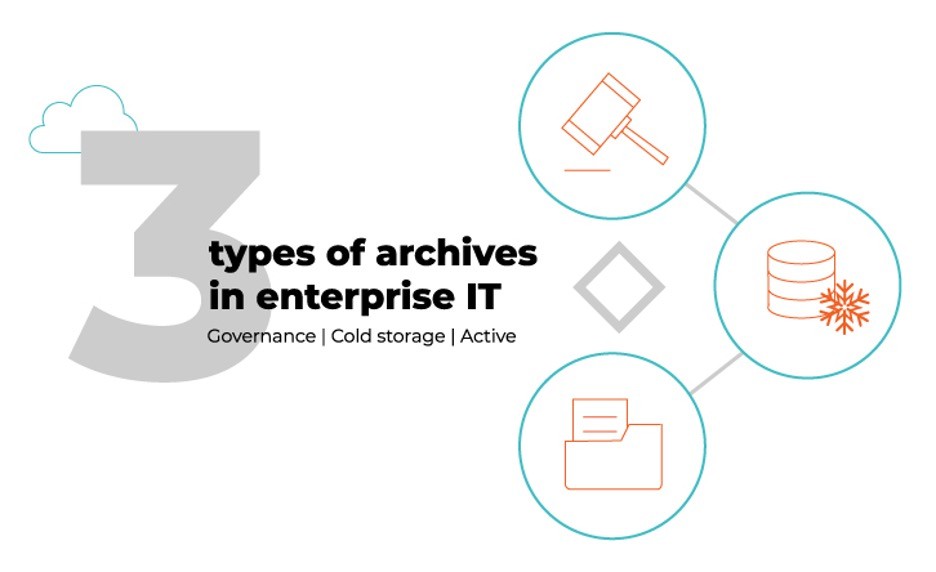3 Types of archive: What’s right for you?

There are generally 3 types of archives in enterprise IT:
- Governance archives (aka. legal hold or compliance archive).
- Cold storage archives.
- Active archives.
Here’s a breakdown of the three types of archives.
Governance archives (aka. Enterprise Information Archiving)
Rigid. Costly. Cumbersome. That’s a harsh but accurate way to sum up this category.
Governance archiving is usually driven by regulatory compliance and/or a desire to be prepared for eDiscovery, with stringent requirements and SLAs. As a result, pricing is at a premium, and vendor contracts tend to be complex. Often times pricing/licensing models are quite complex. And the user experience is often an afterthought.
The primary content targeted with governance archives is messaging (email and instant messaging), although vendors do claim support for various content types ranging from websites to social media to files.
Gartner started to track the enterprise archiving market in 2002 / 2003, and in 2015 claimed the market size was $1.92 billion in 2014. Comparing that to a market size of $6.4 billion in 2022, expected to reach $12.9 billion by 2027, it’s easy to see that enterprise archiving continues to grow rapidly.
Today, migrations are commonplace and the big trend – like anything else – is to go SaaS.
Cold storage archives (aka. nearline storage)
In a previous post, I opined about ‘cold storage’ being used synonymously with ‘archiving’. Cold storage offerings like Amazon Glacier and Google Nearline are the epitome of this category.
Cold storage archives’ main focus is on parking low-to-no-touch data as cheaply as possible. That’s really it, that’s all. But watch out for retrieval times. Depending on how much data you want to retrieve, fetching your data from cold storage archives can literally take days.
While low cost is enticing it can be hard for an enterprise to identify suitable data for this kind of archiving. So obvious candidates like backups and data from retired apps tend to be what is parked here. Because there isn’t any integrated user access, data management, or features that would help you in the event of eDiscovery or an audit, cold archives are often viewed as dangerous by experienced IT leaders, requiring investment in development or 3rd-party software.
Active archives (aka. we need storage tiering without disrupting users)
Emerging in recent years is the concept of ‘active archiving’. To be quite honest, I don’t like the name, but that’s what many are calling it. These solutions are more user-centric and – because they aim to help manage data growth and reduce storage costs – they are much more affordable than governance archives.
The active archiving concept is great and there’s room for innovation, which I like. However, it isn’t immune to things like compliance and litigation, so it will be interesting to see to what extent active archives address feature needs in these areas. If active archives do bleed into the governance arena, it’ll be interesting to see how vendors handle this and what kind of disruption it causes.
I tend to view active archiving as having the potential to be the best of both worlds. By the way, this is the category of archiving Veritas Alta™ SaaS Protection provides.

What’s right for you?
Governance, cold, or active? Or somewhere in between? You might argue these categories are not mutually exclusive. A vendor’s solution may span categories. But usually, an archive solution is really just suited for a particular category.
In each category we’re seeing SaaS as a major theme.
Some might say backup is another category of archiving, but ultimately the difference is in the intended use. Backups are designed to quickly recover current data in the event it is lost or corrupted, while archiving is designed for long-term storage of data no longer in day-to-day use that must still be retained.
You can read more about Veritas’ archiving solutions here or contact an account representative for a deeper discussion.
